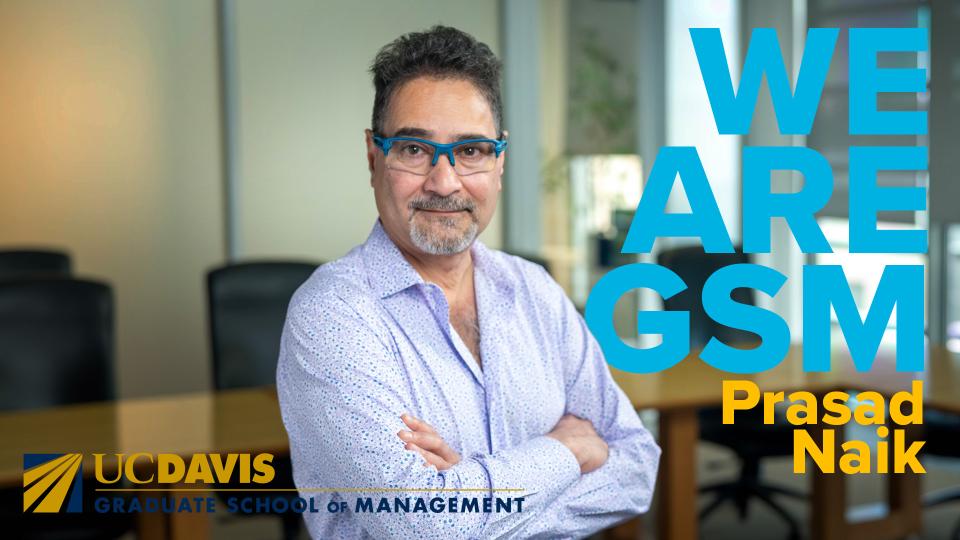“We Are GSM” Video - Meet Professor Prasad Naik

An internationally recognized marketing expert, Professor Naik offers a primer on the impact on sales and competitors’ sales based on allocation and attribution strategies. And shares about his love of cooking and paragliding off cliffs in the Bay Area!
What is the difference between attribution and allocation?
My research is about two things–attribution and allocation. Especially in dynamic markets where today's actions are going to affect future outcomes. The question then arises, what should be your strategy?
On product design, on pricing, on advertising, which social media, how much? That is called allocation.
Attribution is what is the impact of your actions on your sales and competitors’ sales. And so there is a multitude of actions. And so that attribution aspect is one of my main research. And allocation–what is different that you would do to maximize some goal like profit or market share. The true importance of the research is to take into account the feedback from the market, from competitors, your own actions, and then generate, possibility of scenarios, to come up with the best strategy.
Amazon vs. JD.com
Imagine Amazon and they have a fleet of cars, but not all the fleet of trucks that they deliver from are owned by them. That creates settlement risk. So consumer may get the product and it is a different product. Maybe it is damaged product. It is probably stolen or broken or tampered. And so there is always this finger pointing, but no resolution. And that hurts consumers.
In China, There is a company called JD.com, And they decided one day that we are going to make the settlement risk zero. if something goes wrong. It's one stop shop. But the customer never gets the wrong product. We replace it free of cost. So my research was about how much more sales did JD get.
We got together, got the data, analyzed, and then we showed: customers buy more, they buy more frequently, they buy more value in each particular order. But just owning the delivery service. How much can you attribute that sales increase? And that is what is called attribution. And that number turned out to be 12% per year.
Synergy: Testing Common Sense
Synergy means if you are doing two things at nearly the same time, then the joint effect of that is synergy. We wanted to see what should be the optimal allocation to activity one versus activity two. Common sense and prior research would suggest that you should allocate more dollars to the activity, which is more effective.
But the twist is that if there is a joint impact, then you should allocate more dollars to the less effective activity. And that's because the strong gets stronger, reaches the ceiling. While the weak really needs the money to make the strong even stronger.
UC Davis MSBA Co-Founder
So I teach MBA program. I've been teaching it, since 1996 for the last 28 years. But the beauty of MBAs is that they are, business-minded. because they are business-minded, they actually see opportunities on what can I do to apply this knowledge. but MBAs bring that business skills to the table. MSBA program was co-founded by myself and Professor Bhargava in 2017. it is doing excellent. The curriculum is very rigorous and the quality of students is super high. taught them advanced statistics and time series analysis. I bring my research, into the program, because I love time series and dynamics.
My Passions: Cooking and Paragliding
I typically do cooking. I love to cook. It takes me into the zone. And the second thing I would love to do, which I don't do often as much as I should, is paragliding. So I go on Milpitas, go on the mountain cliff. Run along the cliff and keep running. And then the cliff disappears. And then the glider, me and the wind–we are all one. And that is a beautiful experience.